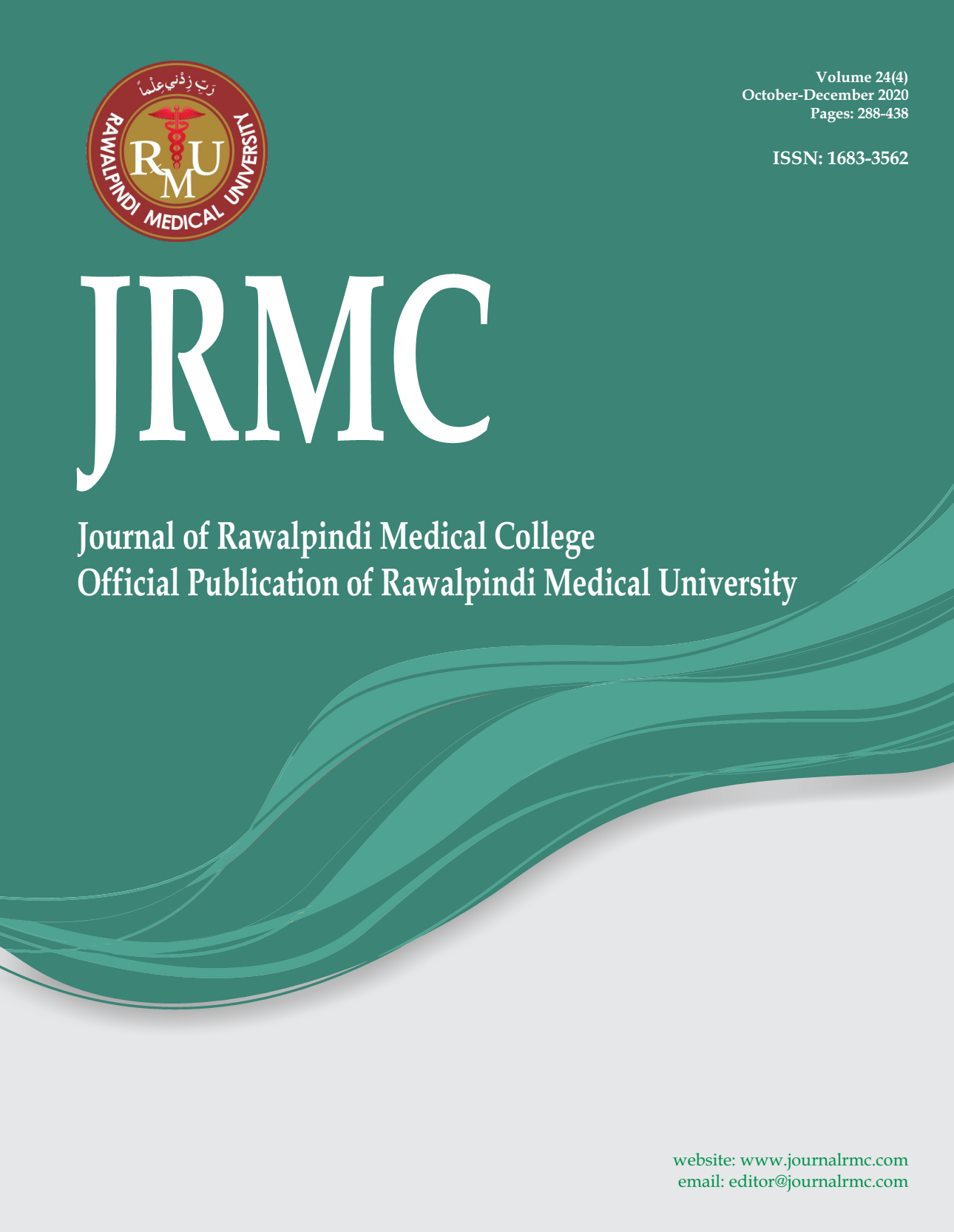Abstract
Objective: The present study was conducted to evaluate distribution, prevalence, number and the commonest site of the sesamoid bones of foot in adult residents of Rawalpindi/Islamabad
Material and Methods:
Study Type: Descriptive Observational Cross-sectional Study
Material and methods: Total of hundred patients were selected from the outpatient department of Radiology Holy Family Hospital Rawalpindi and SON-X Laboratory, Saidpur road Rawalpindi. Fifty were male and fifty were females. Anteroposterior and lateral view of foot radiographs were taken and studied for the prevalence, number and relationship of sesamoid bones to metatarsophalangeal joints in feet.
Results: 2 to 4 sesamoid bones were observed in single foot. Total number in both feet ranged from 4 to 8 bones. Radiographs of male patients showed increased number of sesamoid bones as compared to female patients. 34 out of fifty male patients (68%) had 4 bones. 14 (28%) had 5 bones. 4 (8 %) had 6 bone 7 bones were observed in1 (2%) subject, 1(2%) male subject showed 8 sesamoid bones. However, none of the females had more than six bones. 44 (88%) had 4 sesamoid bones, 3 (6%) of the female had 5 and 3(6%) had 6 sesamoid bones
Conclusion: This study provides data that could assist orthopedic surgeons, radiologists and neurophysicians in diagnosis and treatment of sesamoid bone disorders, which are common in patients with discomfort and pain in feet.

This work is licensed under a Creative Commons Attribution-ShareAlike 4.0 International License.
Copyright (c) 2020 Ifra Saeed, Ayesha Yousaf, Muhammad Musharaf Baig





